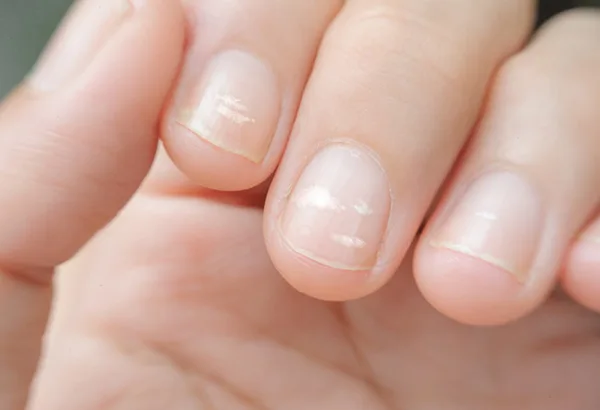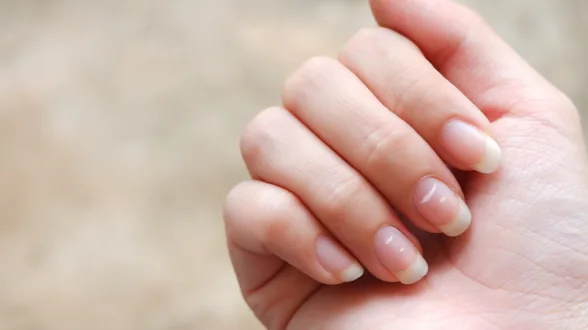Have you ever noticed those mysterious white spots on your nails, and wondered what they are or why they appear? Well, you’re not alone! These pearly white marks, medically known as leukonychia, are actually quite common and, in most cases, harmless. However, it’s important to understand what causes them and how you can treat or prevent them.
While these spots usually don’t indicate anything serious, paying attention to your nails can help you address any underlying issues. In this article, we’ll dive into the various causes of white spots on nails, explore effective remedies, and share tips for preventing them. Let’s keep your nails healthy and glowing!
What Causes White Spots on Nails?
White spots on nails can appear for a variety of reasons. While they’re typically not a cause for concern, identifying the root cause can help you keep your nails in optimal condition.
1. Minor Injury or Trauma
In many cases, white spots appear as a result of minor trauma to the nail matrix (the base of the nail). This could be something as simple as bumping your nail, catching it in a door, or accidentally hitting your nails against a hard surface. The spots usually grow out with your nails over time, so patience is key.
2. Frequent Manicures
Getting manicures regularly, especially with pressure from tools or harsh chemicals, can lead to damage to the nail bed and white spots. While manicures are a treat, overdoing it can take a toll on your nails.
3. Fungal Infections
Fungal infections, like onychomycosis, can cause discoloration, thickening, and even changes in nail shape, along with white spots. If you notice a fungal infection, it’s important to address it promptly with the right antifungal treatments.
4. Allergic Reactions
Your favorite nail products—whether it’s nail polish, nail hardeners, or glue—may sometimes cause an allergic reaction, which can manifest as white spots. If you experience irritation or discomfort along with the spots, it might be time to switch brands or consult a dermatologist.
5. Mineral Deficiencies
A lack of essential minerals, particularly zinc and calcium, can lead to white spots on nails. A nutrient-rich diet is essential for maintaining healthy nails, so make sure you’re getting the right vitamins and minerals.
6. Nail Trauma from Gel or Acrylic Nails
Gel and acrylic nails are popular for their long-lasting shine, but their application and removal can sometimes damage natural nails, leading to white spots. Proper care and avoiding frequent use of artificial nails can help prevent this.
7. Medical Conditions
In rare cases, white spots can be linked to medical conditions such as psoriasis, eczema, or thyroid disorders. If you notice other symptoms or your white spots persist, consulting with a healthcare professional is advisable.
8. Medications
Certain medications may cause changes to nail texture or color, including the appearance of white spots. Always speak with your doctor if you suspect your medication might be affecting your nails.
9. Genetics
Sometimes, genetics play a role in the appearance of white spots. If your family members have experienced similar nail issues, it could be inherited.

How to Get Rid of White Spots on Nails?
While white spots are usually harmless, there are several things you can do to help improve your nail health and get rid of those spots over time. Here are some effective methods:
1. Wait for Nail Growth
If your white spots are due to trauma or injury, the best solution is patience. As your nails grow, the spots will gradually move toward the tips of the nails and eventually disappear.
2. Nail Strengthening Treatments
Consider using nail strengthening products like biotin supplements, nail hardeners, or keratin treatments. These products can help promote stronger, healthier nails, which may reduce the appearance of white spots.
3. Maintain Good Nail Hygiene
Avoid over-manicuring or using abrasive nail tools, which can exacerbate nail damage. Keep your nails clean and dry, and always dry them thoroughly after exposure to water to prevent fungal growth.
4. Use a Protective Base Coat
Before applying nail polish, always use a base coat to protect your natural nails from damage. This layer acts as a barrier between your nails and the chemicals in polish, reducing the risk of white spots from harmful exposure.
5. Treat Underlying Causes
If you suspect fungal infections or mineral deficiencies are to blame, it’s essential to treat the root cause. Antifungal medications or over-the-counter treatments can be used for fungal infections, while increasing your intake of zinc and calcium through diet or supplements may help with deficiencies.
6. Protect Nails During Activities
If you’re frequently involved in activities like gardening, sports, or other nail-damaging tasks, consider wearing protective gloves to prevent injuries and trauma that can cause white spots.
7. Avoid Overexposure to Water and Chemicals
Prolonged exposure to water and chemicals can weaken your nails, making them more susceptible to damage. Wear gloves when cleaning or washing dishes to protect your nails from harsh chemicals.
8. Consult a Healthcare Professional
If your white spots persist, are recurring, or are accompanied by other concerning symptoms such as changes in nail texture, shape, or color, it’s time to consult a dermatologist or healthcare professional. They can help diagnose any underlying medical conditions and recommend appropriate treatment.ent.
It may take several weeks or even months for white spots caused by nail trauma to disappear. Maintain good nail care practices to prevent future occurrences.

Are White Spots on Nails a Sign of a Serious Health Problem?
Generally, white spots are not a sign of a serious health issue. They are most often caused by minor trauma or external factors. However, if the spots are persistent, accompanied by other unusual symptoms (like nail thinning or discoloration), or if you have concerns, seeking professional advice is the best course of action.
Home Remedies for White Spots on Nails
While there’s no scientific guarantee that these remedies will work for everyone, some natural treatments may help improve the appearance of your nails over time:
Tea Tree Oil
Tea tree oil is well-known for its antifungal properties. If a fungal infection is causing the white spots, you can dilute tea tree oil with a carrier oil (like coconut oil) and apply it to the affected nails.
Lemon Juice
Lemon juice is often touted for its natural bleaching properties. Apply fresh lemon juice to your nails and let it sit for 10-15 minutes before rinsing. It may help reduce the appearance of white spots over time.
Coconut Oil
Coconut oil is not only moisturizing but may also promote healthy nail growth. Regularly massaging your nails with coconut oil can help keep them hydrated and improve their overall health.
Probiotics
Probiotics are known for their ability to support overall health, including immune function. Eating probiotic-rich foods like yogurt, kimchi, or taking probiotic supplements may help improve nail health by supporting your body’s defenses.
Dietary Changes
To address mineral deficiencies, ensure you’re eating a balanced diet rich in zinc, calcium, and other essential vitamins and minerals. Foods like leafy greens, nuts, dairy products, and eggs are excellent choices to nourish your nails from the inside out.
In Conclusion: Healthy Nails, Happy You
White spots on nails are generally harmless and can often be resolved with a little patience and proper care. Whether they’re caused by trauma, fungal infections, or nutrient deficiencies, there are steps you can take to improve your nail health. By maintaining good nail hygiene, eating a well-balanced diet, and protecting your nails from damage, you can prevent white spots and promote overall nail health.
If the white spots persist or you notice other changes in your nails, don’t hesitate to consult with a healthcare professional for personalized guidance. With the right approach, your nails can be healthy, strong, and beautiful—inside and out!
Related: Effective Ways to Get Rid of Blackheads at Home
Related: Why is My Hair Not Growing? 7 reasons for slow hair growing
Related: Eyebrow Hair Loss: Causes, Treatments, and Prevention



